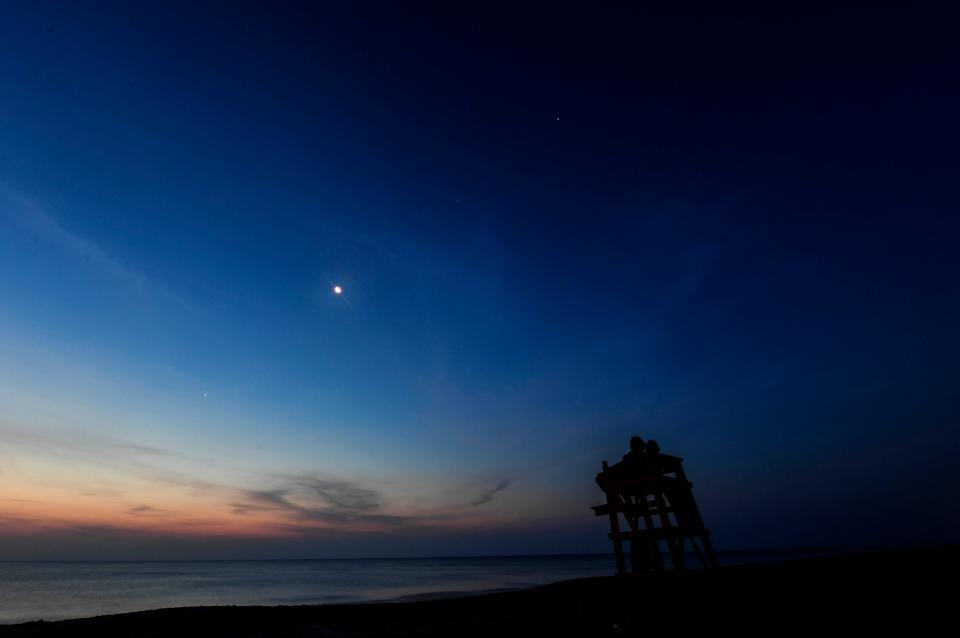A planet parade will appear in the night sky next week. Here's how to see it 🪐
Have you ever wanted to see a planet? Well, next week you will get the chance to see not one but five of them.
Five planets, Jupiter, Mercury, Venus, Uranus and Mars, will be visible in the night sky Tuesday, March 28, according to Star Walk, an astronomy app and website. They will appear in an arc shape just above the horizon near the quarter-moon, WKYC reports.
For those interested in seeing this planetary parade, you are encouraged to start your observations soon after sunset. March 28 will be the best day for observation, but you can also see this cosmic event a few days before and after the date.
'Is that a UFO?': Top 5 brightest objects in the night sky
Spring 2023:It's mulching season, but don't get caught up in 'Mulch Madness' this spring
Business Insider says timing, dark skies and a clear view of the horizon are essential to seeing all five planets in one night.
While most of them should be visible to the naked eye, you may need binoculars or a telescope depending on the weather forecast. Venus, however, will be the easiest planet to spot because it's the brightest planet in our solar system.
What is a planetary alignment, or a planetary parade?

Starwalk reports that planetary alignments are "when several planets gather closely on one side of the Sun at the same time." A planetary parade is a colloquial term that refers to when several planets are visible in the sky at once.
Travel:CVG ranks in top 10 for 2 regional airport awards. Here are the winners
Several smaller planetary alignments are also slated to appear in 2023.
April 11: A small evening alignment of Mercury, Uranus, Venus and Mars.
April 24: A small evening alignment of Mercury, Uranus, Venus and Mars.
May 29: A small morning alignment of Uranus, Mercury, Jupiter and Saturn.
June 17: A large morning alignment of Mercury, Uranus, Jupiter, Neptune and Saturn.
July 26: A mini-evening alignment of Mercury, Venus and Mars.
Aug. 24: Two small planetary alignments will occur at sunset and at night. Mercury, Mars and Saturn will be visible in the morning and Uranus, Jupiter, Neptune and Saturn will be visible at night.
This article originally appeared on Cincinnati Enquirer: What is a planet parade? Here's how to see 5 planets at once next week

